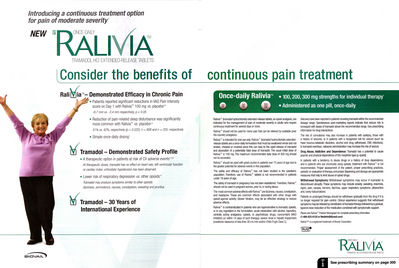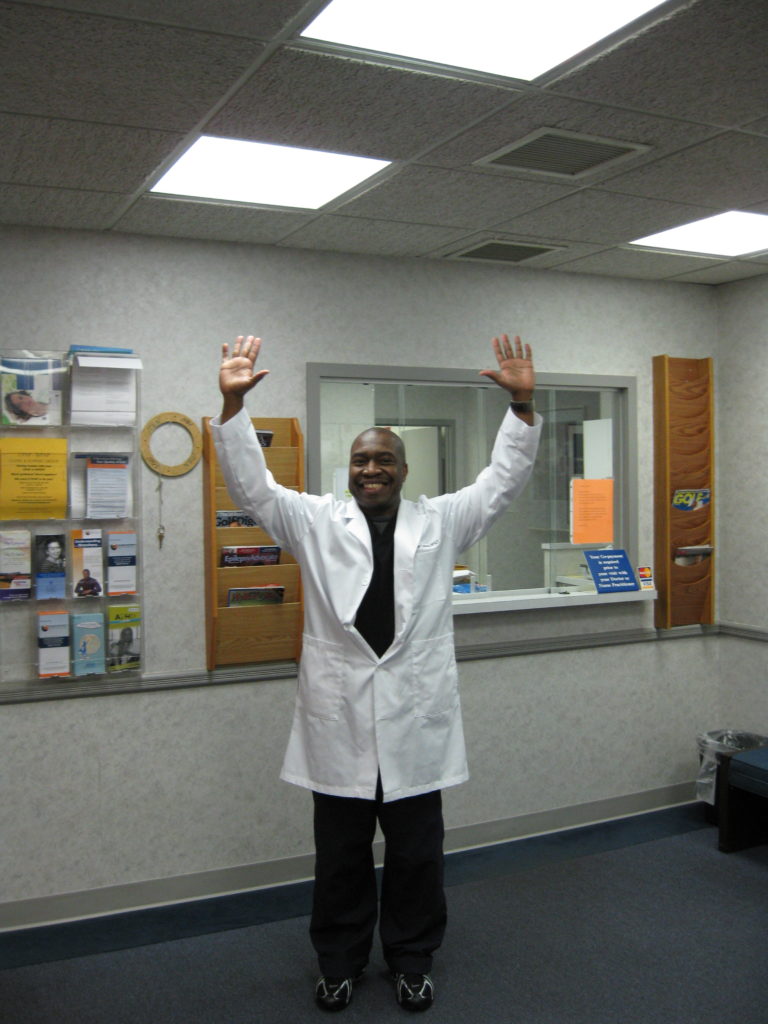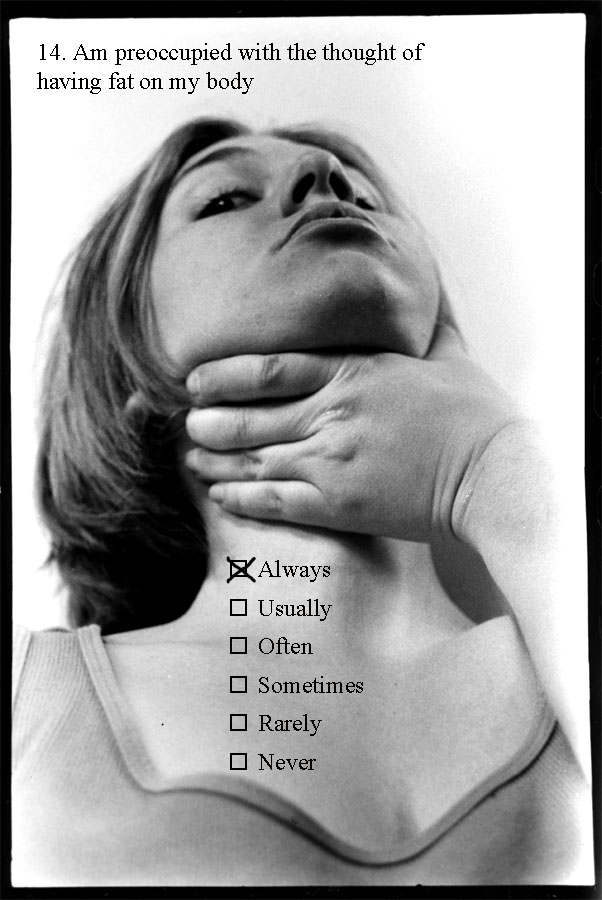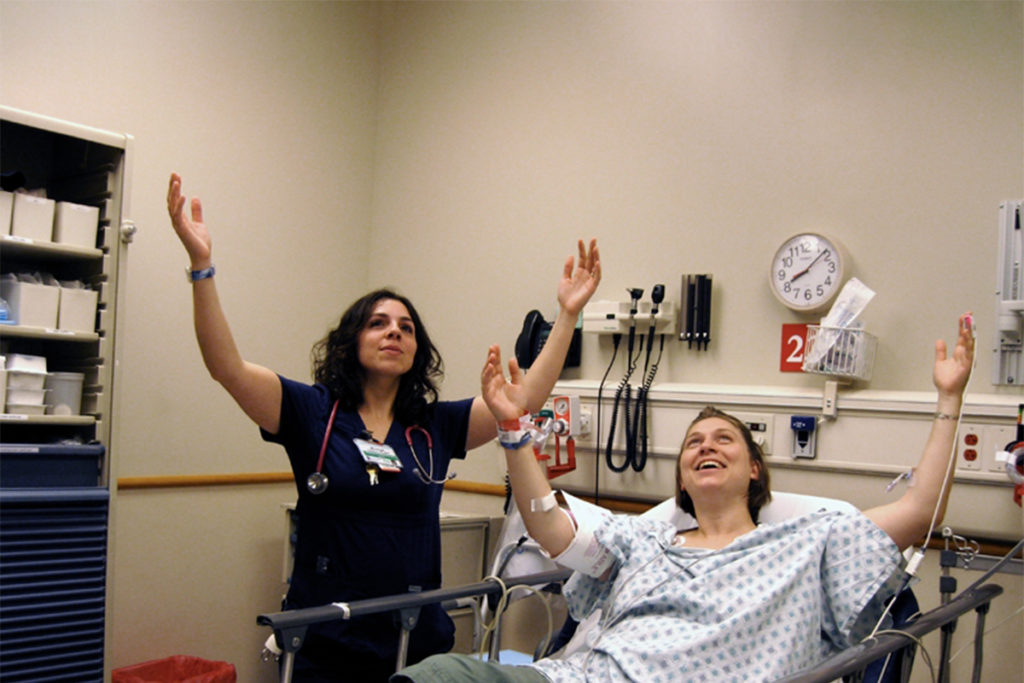
Yesss… 
Curtain Call. 20 ft. of Arms Outstretched 

eight of ten Doctors on my team agreed 
Displayed on x-ray boxes on the gallery walls. Oh, how they glowed! 

You’ve got to start somewhere…
Throughout my studies I’ve found, and myself created, creative work on pain, suffering and illness. I have since challenged myself to imagine and explore the “other end,” and shifted my focus from illness towards work (play!) about wellness.
I am interested in how images of wellness are constructed and propagated. I start my research where I am most often — the medical waiting room. There, mythical, idealized, and surreal images in the media give a very narrow view of the possible faces of health. Research into the advertising of pharmaceuticals and health products led me to create a series of idealized Wellness Images, Wellness Videos, Prescriptions, Coaches, and IDYLIFY, a Debord-inspired “Society of the Spectacle” website as portal for critique.

Despair 
Death
The Wellness Pose
When I think of what wellness would look like for me, in conscious and subconscious thought, I run through the cadre of marketing images I have eaten up in magazines and TV sets in waiting rooms, on tissue boxes and clipboards and pamphlets. There I find a recurring and visually striking theme of devotion, surrender, and reverence. I found over and over in my research ads with a person in a familiar posture. The recurrent pose of both arms outstretched, palms out, head lifted, has been common in religious art of both ancient and Christian faiths. In the Judeo-Christian tradition, this pose is called the Orant, a gesture used during prayer, painted in icons, and attached to sarcophagi of seekers of salvation.

Certainly this pose conjures feelings of devotion. Additionally, it is a posture of praise, of exuberance, reverence, and waiting. It is a pose of dissociation. The offset, distant gazes and surrendering body posture imply an otherness. The other may be the authority of the medical establishment. We are asked to believe in the salvation medicine promises such that we open our bodies and hearts in posture and action. In this posture of surrender, we are offering ourselves while banishing critical judgment which might otherwise question the authority of the pharmaceutical and its claims. We surrender our questioning of the acculturated ideals of wellness.

The works here have all been shown in installations. One image depicts a medical dividing curtain with 20 feet of wellness poses from actual ad campaigns. The glowing pictures in a grid are four X-ray box slides of my doctors, back lit. Eight of ten docs on my team agreed to be photographed in their version of the Wellness Pose. They essentially “misbehaved” as medical professionals, stepping outside their proscribed roles as health professionals.
Discussions with doctors and assistants and reception staff, other patients about what is a reasonable expectation for wellness and the pressure I/we feel to conform is one main component of my work. This makes it relational, performative, and activist. Best of all it makes for surprises. Given the sanctuary-like silence and downward “blame-it-on-HIPPA” gaze, one would imagine sterile individualism. Still, it turns out, people are just dying to talk about (their) health.
I am conscious in my process: my waiting room installations and medical contexts are not “real space” reconstructed in a gallery. I am not interested in translation from one site to a gallery, where sterile individualism often reigns too. Rather, the theatrical and humorous spaces with a zillion entry-points and interactive bits are tactical. A participant would perhaps gain awareness of a dysfunctional ideology, and then practice disrupting it. There is always room for “misbehaving” in my installations. We can list diagnoses with descriptions akin to those of gourmet cheese, write med lists as haiku, refuse to be weighed when we go in for an ingrown nail, list social-justice privileges and gratitude for what allows us access to care, or rearrange the ad-placement items in the room as a shrine to pharmaceuticals… It’s all the better when I am myself surprised by the interventions. Go ahead, go wild.
